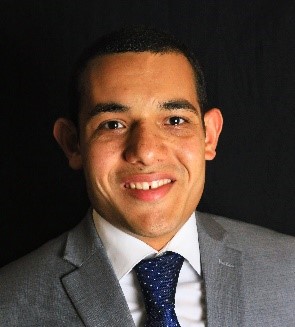Session 2
Thursday, November 4th
8:30am – 9:30am US Central Time
Presentation 1:
The Advent of Logging-While-Drilling Downhole Fluid Analysis: Case Studies from South East Asia.
 Aldrick Garcia Mayans, Schlumberger
Aldrick Garcia Mayans, Schlumberger
Downhole fluid analysis (DFA) has proved to be an effective technology for assisting in understanding reservoir dynamics, fluid distribution, reservoir compartmentalization and in-reservoir processes. Until recently, DFA technology was only available with wireline-conveyed tools. It was typically performed after the well had been drilled, limiting the ability for real-time decision making. The recent advent of logging-while-drilling (LWD) DFA technology — also known as fluid mapping-while-drilling (FMWD) — allows operators to make informed and timely decisions early on well construction, landing, geosteering and completion without pulling out of hole. This paper presents the results of an FMWD campaign by Repsol in Malaysia.
FMWD technology was deployed in five wells with different objectives but with the common goal of enabling real-time decision making prior to the bottomhole assembly (BHA) reaching the surface. The FMWD objectives were to assess reservoir connectivity, monitor pressure depletion, measure CO2 content, and differentiate between formation fluids (gas, oil, and water). For exploratory targets, the service was run to confirm the presence of hydrocarbons and to assess in-situ fluid properties. In a highly deviated well, the technology was used to confirm fluid properties for geosteering the wellbore through a targeted zone if it proved to be oil bearing.
The campaign was very successful, and the objectives were fully achieved. With the completion of more than 130 pressure tests, a comprehensive and complete pressure profile was obtained in each of the five wells, allowing for the selection of the most appropriate depths for DFA fluid scanning and sampling. Twenty-four DFA stations enabled clearly identifying fluid types in various exploratory and appraisal targets. This information was then used to make key decisions on well landing and completion strategy. In addition, CO2 was systematically identified and quantified by the tool optical spectrometers; thereby, accurately mapping its distribution across the field. Real-time data transmission using mud pulse telemetry allowed for real-time monitoring and important operational decision making. In some cases, only 15 minutes of pumpout was sufficient time to identify the movable reservoir fluid phase. In other cases, physical downhole fluid samples were collected once the mud filtrate contamination had sufficiently decreased below the predefined acceptable limit. In general, the time on each station was brief, which was attributed to reduced depth of filtrate invasion because FMWD operations took place soon after drilling.
This paper presents the lessons learned from introducing of the FMWD service in exploration, reservoir management and geosteering, within the same five-well drilling campaign. Until the present time, this technology was only available using wireline. However, the introduction of LWD DFA has been found to be disruptive for reservoir management, drilling, completion, and geosteering applications, similar to the way formation pressure-while-drilling (FPWD) was a gamer changer for the drilling industry when introduced in early 2000s.
Speaker: Aldrick Garcia Mayans is a Principal Reservoir Engineer and Asia LWD Reservoir Domain Champion located in Jakarta, Indonesia. Prior joining Schlumberger in 2004 as a field engineer, he earned a MSc in Mechanical engineering from École Nationale d’Arts & Métiers, France and a MSc in Petroleum Engineering from the French Petroleum Institute, France. In Schlumberger, he has been working closely with LWD reservoir services holding various field, technical, and interpretation positions in Congo, Angola, United States and Indonesia. Prior to his present position Aldrick was North America LWD Reservoir Domain Champion. He authored and co-authored several industry papers and patents related to formation pressure, formation sampling and annular pressure while drilling services and applications. He is a member of the SPWLA and SPE.
Presentation 2:
Areal
connectivity assessment of a heavily compartmentalized reservoir through
downhole fluid analysis and data integration.
 Tarek Mohamed, The University of
Texas at Austin
Tarek Mohamed, The University of
Texas at Austin
Connectivity
assessment is vital to the development of deepwater reservoirs where inaccurate
characterization often results in production underperformance. Connectivity
realizations are needed for production forecast, completion and production
plans, and water flooding plans, to name a few. Seismic surveys are not always
sufficient to evaluate lateral connectivity as detected faults might be
transmissive or partially transmissive. Additionally, the presence of
sub-seismic sealing faults is a constant possibility. Vertical connectivity
represents another uncertainty where, in many cases, pressure measurements and
conventional well-logs are unable to predict the presence of baffles and
barriers along oil columns. In moderately complex reservoirs, downhole fluid
analysis (DFA) workflow proved to be sufficient in addressing reservoir connectivity.
However, heavily faulted reservoirs necessitate a comprehensive approach to
address their excessive complexity. This study presents a novel workflow to
evaluate the connectivity of heavily compartmentalized reservoirs. We
implemented our workflow to characterize the connectivity of an exceedingly
complex deepwater reservoir. As a result of our study, we were able to classify
detectable faults as sealing, transmissive, or partially transmissive
faults. The presence of sub-seismic
faults was also detected.
Tarek Mohamed is a graduate student and petrophysics research assistant
at the University of Texas at Austin, pursuing a PhD degree in petroleum
engineering under the supervision of Dr. Carlos Torres-Verdin. His research
focuses on developing new interpretation methods and applications of formation
testers and downhole fluid analysis (DFA) measurements. He holds a BS degree
from Suez University, Egypt, and an MS degree from the University of Oklahoma
in petroleum engineering, and a Graduate Certificate in data science and
analytics from the University of Oklahoma. His wide educational background
includes petrophysics, formation evaluation, reservoir characterization,
reservoir numerical modeling and simulation, well test analysis, reservoir
geomechanics, and data science and machine learning. He also has a variety of
professional, teaching assistance, and research experiences
How to Register:
1) Log In -> Click on the "register myself" tab -> Add this event to your
cart -> Complete the payment -> Find a receipt in your email for your
records. You have not completed the registration until go to step 2.
2) Locate the email from webinar_registration in you inbox. Please
immediately follow through to complete the registration in order to
generate a unique link from our GoToWebinar vendor platform. You must
have the link to access this class, without the link you will not be
able to join. Being proactive will allow you easy access.